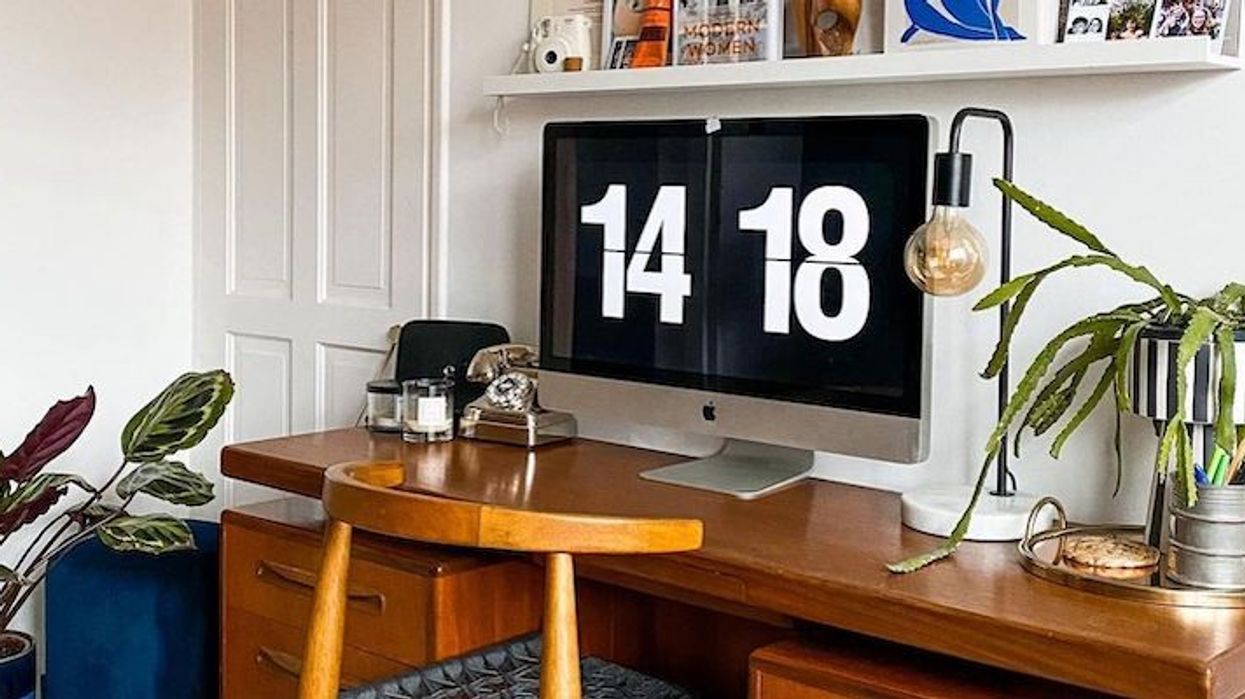Since COVID-19 lockdowns forced most workers to bring their jobs home -- with many still unable to return to their respected workplaces -- the home office has once again become a much-coveted feature of modern living.
For years, having a dedicated workspace in one's home was essential for homebuyers and renters alike. But after fading in popularity in the '90s -- and after startups and corporate companies began attracting employees by offering work environments that staff actually enjoyed and wanted to spend time in -- home offices have once again become desired real estate.
RELATED
This past March, as the severity of the novel coronavirus became known, all three levels of government asked a majority of workers to stay home -- a directive that would keep all but essential workers from going to work. As a result, there was a massive surge of people working from home for their first time -- ultimately changing work habits and environments for millions.
In fact, Statistics Canada found that the number of Canadians who worked from home during the final week of March totalled 6.8 million, representing 4 in 10 workers in the country or 39.1% of the workforce. What's more, 4.7 million of the total 6.8 million who worked from home did not usually do so.
In the weeks to follow, workers began transforming areas of their homes into make-shift work environments, often being forced to share their kitchen tables or desks with partners and roommates, or with children stuck at home once schools closed. Of course, there were also the workers who had the room and the means to set up high-end home offices complete with multiple monitors and ample space to get their jobs done.
READ: Tips For Creating A Productive Workspace At Home Or At The Office
Those limited on space, particularly city-dwellers living in cramped condos and apartments, were forced to get creative with their work environments, with window-mounted floating desks becoming a pandemic home office staple.
And luckily for the workers with questionable home decor, the video conferencing platform Zoom, which was (and still is) an essential tool for workers during the pandemic, made it easy for users to swap their actual background with a virtual background that looks much nicer during video meetings.
In the summer months, governments began loosening COVID-19 restrictions and life began to somewhat return to normal. As a result, some workplaces were able to re-open, though to keep employees safe and healthy, companies began implementing solutions that would allow for social distancing while also reducing the density in the workplace.
However, at the workplaces where this wasn't possible, employees are still working remotely from home -- many of which have been stuck working in the same make-shift office for the past nine months.
This has lead workers to reconsider the function and the design of their homes, especially now, as we navigate the second wave of the pandemic, which makes the chance of returning to the office in the (near) future feel far from reality.
Jessica Neilas, President & Creative Director of Wolfe Interior Design, says she believes having a dedicated home office and workspace is incredibly important right now.
"People still need to feel important in order to motivate themselves and be efficient when working from home. By dedicating a specific area in a living space to work, we designate it mentally as an important one, and when humans are doing what we perceive as ‘important work’ it can make a massive positive impact on our performance and productivity level," explained Neilas.
Neilas says that amid the pandemic, she has noticed the focus on home office functionality has been instrumental in 2020 for her clients.
"We are designing at least ten home offices right now and some of those projects have shifted focus towards upgrading a planned office while others have completely revamped their floor plans in order to accommodate a new necessary workspace."
In light of this, there's been a growing trend of city urbanites -- most of which are millennials -- trading their skyline views for the suburbs in the hopes of finding more space to work and live more comfortably.
But regardless of where you're living, just remember that there are perks -- comfy loungewear and no commute to worry about -- but also pitfalls of working from home, like distractions and lack of boundaries between on-and-off work hours. This is why having a dedicated workspace that allows you to be both productive and comfortable is key.
Remember, your home office needs to be more than just a place for you to kick back with your laptop. It needs to be adapted to you and your everyday needs, such as your height (get the right chair!) and how much space you actually need to get your job done right.
For those living in smaller spaces, such as condos and apartments, Neilas says that just because you have a compact living arrangement, that doesn’t mean you can’t have a super motivational and effective workspace.
"My number one tip is to invest in closed storage. Open shelving and a messy desk space can add to visual clutter and become demotivating and stressful. By having a desk space which can be concealed when not in use, generally removes the grey area of 'live/ work' and will allow you to unplug when not working and return to your work refreshed and ready."
However, it's not just Neilas who's noticed an increase in home office inquiries, John DeFranco, Chief Commercial Officer of Staples Canada says he has also seen a significant demand and an increased interest in home office and technology products from those looking to improve their at-home workspaces for remote work and those needing products for at-home classrooms to support virtual learning.
DeFranco says some of the products that have been popular are ergonomic solutions, including desks, chairs and monitor risers, as well as improved technology solutions to stay connected like webcams, ring lights, laptops, Wi-Fi enhancers, tablets, and more.
"For learning from home, we have seen an increased interest in creativity and learning products that include coding and STEM learning kits, DIY crafting kits, bulletin boards, Chromebooks, child-friendly headphones, and rolling craft carts to store learning supplies,” says DeFranco.
“Another reality of the pandemic is that many households are seeing multiple people working and learning from home at the same time,” added DeFranco. “Remote workers and students all using common areas can make a home feel cramped, so desks that fit into smaller spaces, standing desks and those with storage capacities have become increasingly important to help maintain productivity and organization.”
For those looking to design the perfect home office, Neilas suggests choosing a spot with natural light. "You want the vibe of your workspace to be motivating and energizing."
She also recommends investing in proper ergonomic workspace furniture. "Buy seating and work surfaces that best suit your line of work and functional requirements. Choosing appropriate furniture for your body enables you to be productive and not give reason to abandon your post easily. I also highly recommend sit-to-stand desks or tabletop stands for best physical health and productivity."
Finally, Neilas suggests designing your workspace to be a place you truly enjoy being in. "Add art, plants or lighting which are inspiring and alluring to you. This will add extra excitement and motivation to ‘get to work’."
Because, like it or not, working from home looks like it's here to stay -- which not only has people wondering about the future of the traditional office but also has people understanding the importance of their home office.
If you have yet to create your workable space, now's your chance -- the federal government recently announced that “home office expense” tax claims of up to $400 will be permitted in the coming tax season.





















